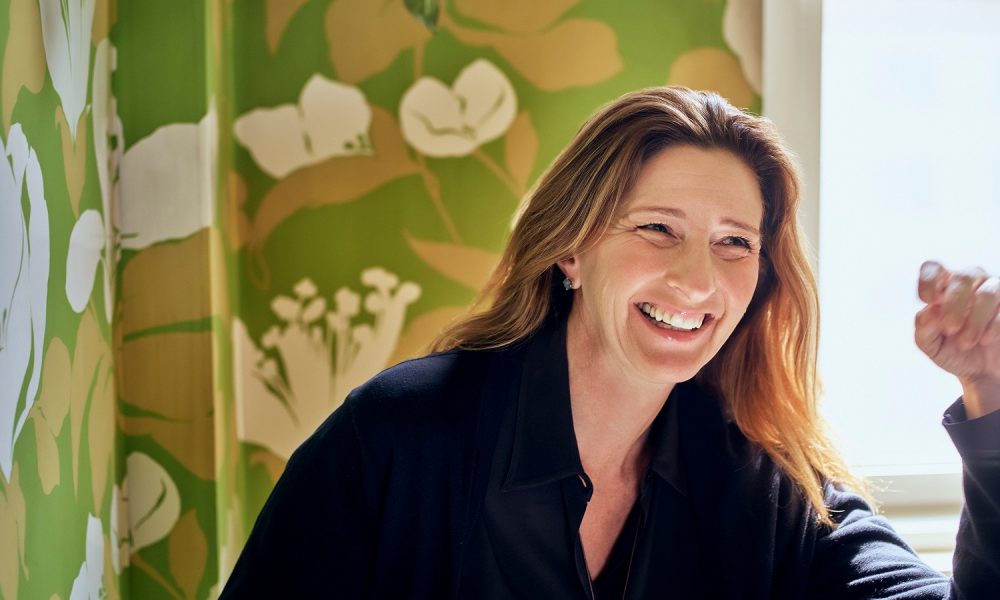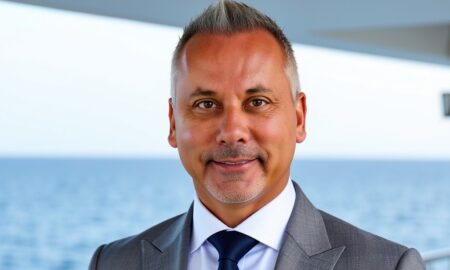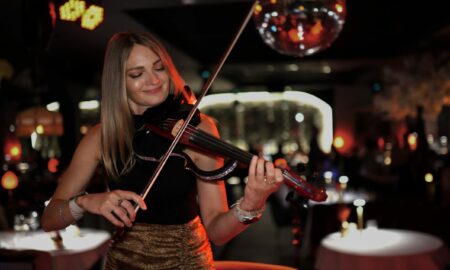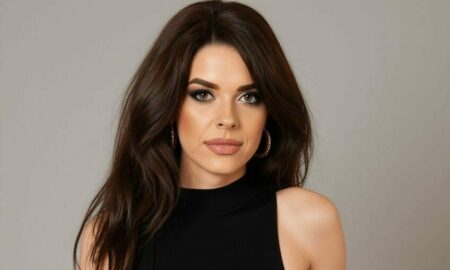

Today we’d like to introduce you to Beth Lane.
Alright, so thank you so much for sharing your story and insight with our readers. To kick things off, can you tell us a bit about how you got started?
My Grandma used to tell me that she was hosting a big party with a 30 piece swing band and no-one was dancing – they were all over in one corner. So, she and my Grandpa went to the corner to see what was going on. They found me in that corner, at the age of three, singing songs to a crowd of guests. I’ve always been an actor, a dancer and a singer. My Mom was a dancer, my Dad liked to croon, my other Grandpa was a neurosurgeon with a penchant for language and poetry and my other Grandma was an artist. Being a creative in my family was encouraged, celebrated in fact. I’ve performed in some magnificent theatres such as The Metropolitan Opera in New York City and I’ve performed in some postage stamp watering holes with water leaking through the roof of the dressing room. I loved them both, equally, for very different reasons. Thanks to Joyce & Byrne Piven, where I was an original member of their Young People’s Company, I was cast in my first film in 1979, “My Bodyguard” directed by Tony Bill. I always found myself wanting to hang out with the team at the video village where the director, script supervisor and other crew members were looking at the monitors. I was usually shooed away, but I was persistent.
I’ve always told stories in one way or another, mostly live theatre, some writing, a lot of nightclub singing… I learned from so many wonderful teachers that “to put a song over” you’ve got to tell the story. I’ve continued to work in theatre and film, but the first time I produced a film was in graduate school at UCLA where I was enrolled in the School for Theatre, Film and Television. An LGTBQ LatinX version of “Romeo & Juliette” called “Romeo & Julio.” I loaned my house to serve as the sound stage for filming, I did the set design, but best of all, I had a place in video village. Even in mid-life you just never stop learning, I’ve always believed that, to the point of going back to school in my 50s. I felt that my the accumulation of years and years of working as an actor, combined with my sense of design (I was an interior designer for many years while my kids were growing up) and the myriad of classes I undertook at UCLA gave me the courage to don the hat of “filmmaker.” This idea of every frame we see on screen is a snapshot, a painting, offering the viewer the opportunity to experience relationships without words- in such a visual way – I really got excited to hone my storytelling skills in this medium.
Would you say it’s been a smooth road, and if not what are some of the biggest challenges you’ve faced along the way?
I’ve always known my mother’s story – bits and pieces anyway. At the age of six, the same age she was when she came to America as a refugee from war-torn Germany, I learned she was adopted. I don’t recall how old I was when I learned Mom was a Holocaust survivor, as a matter of fact, I’m fairly certain she didn’t even call herself a refugee or a “survivor.” But as a child with a vivid imagination, such that it was no surprise to anyone when I became an actor, I used to fantasize I was meeting my Mother’s birth parents or her birth siblings. My Mom and her siblings survived the Holocaust and emigrated to America together, however, once they all arrived in Chicago in 1946, they were dropped off one by one to different foster homes. Can you imagine? After all those horrible years of surviving together and then to be separated. My Mom was the youngest and the children’s Bureau had found a family that wanted to adopt. Hence, my mother entered a new life, a new family… she didn’t se her birth siblings for over 40 years. Once reunited, I had the opportunity to meet Mom’s birth siblings. I became very close with Mom’s brother, my Uncle Alfons. He and I developed a very close bond and made plans to go and visit the farm in Worin, Germany, where he and my mother were hidden for two years during the Nazi reign of terror. Alfons became quite ill and died unexpectedly. It was a huge loss for the family. He had been working with the town historians of Worin to make an application to Yad Vashem to bestow the honor of Righteous Among the Nations to Arthur & Paula Schmidt, the farmers who hid them. His work was not in vain and eventually, The Schmidts were bestowed the honor, but I am very sorry to say that Uncle Alfons was not alive to see it.
My mother felt compelled to go back to Germany for the first time in over 70 years, to honor her brother, to honor the Schmidts and to look at her history square in the eye. We traveled, she and I, along with my sister and Dad to Worin, and we were guests of the town historians, Herbert & Marlis Schuler. These generous, wonderful life-long residents of Worin provided a bountiful spread of delicacies and spirits and on top of their hospitality, they had a surprise for us. The Schulers invited the grandson of Arthur Schmidt to come and meet us. The next of kin, who would eventually be the recipient of the honor bestowed on his grandparents! Meeting the grandson was a watershed moment. Indeed it was truly in that moment that I decided I had to make a movie. I had written about my mother’s story on a few occasions, as a one-woman play, a nine character play, poetry…but it wasn’t until I met the grandson, Arthur III, that I was able to see the point of view that I needed to bring this story to life for others to embrace and experience.
Appreciate you sharing that. What else should we know about what you do?
As a performer I had always felt I was born in the wrong era or even century. I married my husband thirty years ago and I insisted on a 1920s themed wedding. It was pretty great – we had a 30 piece swing band, I suppose I always wanted to relive that same experience I had at the age of three! A big band at a private party… I’ve always gravitated towards period pieces in some way. So it should come as no surprise to me that I am making a documentary feature about a period in history when I wasn’t alive, the 20s, 30s and 40s. I love the challenge of making historical figures come to life. In 2018 I played Queen Elizabeth in a production of “Mary Stuart,” in 2017 I played Helen in “Helen” – that’s Helen of Troy. So I believe that my strength is in creating nuanced, accessible characters, especially with characters who are archetypes in history. As an actor, of course you use your voice and your body as well as your imagination to create a three-dimensional character but you must exhibit real behavior. And how does behavior change over the decades? It’s exciting to bring this skill set to the documentary film world.
My job as the director is to capture the motives and mindset of the people I am filming so that the viewer can have a physical and actively imaginative response to the characters and their circumstances. I’m very proud of the fact that WOULD YOU HIDE ME? has the potential to stir the imagination, tap into human behavior and inspire the viewer to examine their own capacity for empathy and compassion. I think my ability to discern the truth is what makes our film unique. I guarantee you that whatever you think a Holocaust should look and feel like, WOULD YOU HIDE ME? will not be what you expect. To begin with, it’s a road trip movie. Who doesn’t love a road trip movie? And on this road trip, the human connections made along the way open a portal into the conversation about Holocaust awareness and our capacity to grapple with human kindness.
Any big plans?
We are in post-production and are screened our fourth rough cut on May 20th which happens to have been the 75th Anniversary of the Weber Siblings’ arrival in America. This event was a big deal! The press came to interview the Aunties and my Mama. The film wasn’t ready, but I showed them the inner workings. At this stage I will bring on animators, visual effects artists and musicians next. WOULD YOU HIDE ME? will be ready for a 2022 premiere. But until we get the delivery of our content absolutely right, I simply won’t rest. And then, of course, we have an educational outreach plan and lots of ideas for community engagement. I need to write the book of the story because so many details are being left on the cutting room floor. And then we have tremendous hope for a traveling museum exhibit, all in service of inspiring compassion and reminding ourselves that every small gesture of kindness matters.
Contact Info:
- Email: [email protected]
- Website: www.bethlane.com
- Instagram: https://www.instagram.com/bethlanefilm/
- Facebook: https://www.facebook.com/Bethlanefilm
- Twitter: https://twitter.com/bethlanefilm
- Youtube: https://www.youtube.com/channel/UC-mSujkwcnqOdUzpGNq8KbQ/videos
- WOULD YOU HIDE ME? Is seeking finishing funds from donors and investors alike. To make your tax-deductible donation click here.




Image Credits:
Olivia Aquilina stills from WYHM? Chad Batka photo of Beth Lane



















